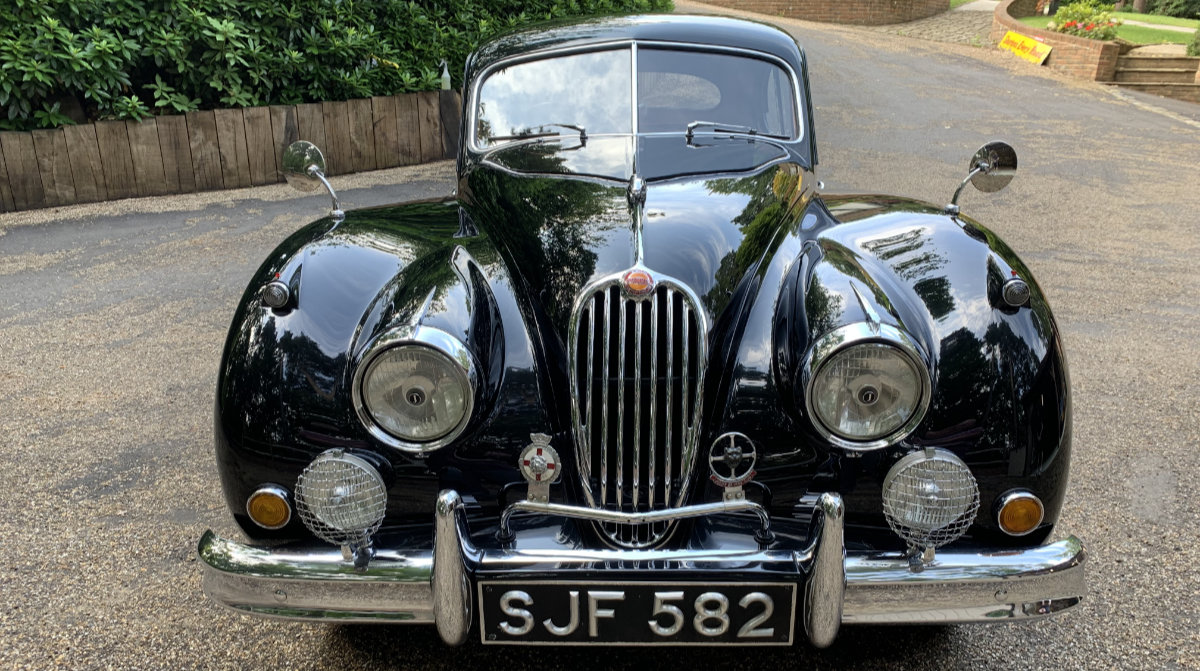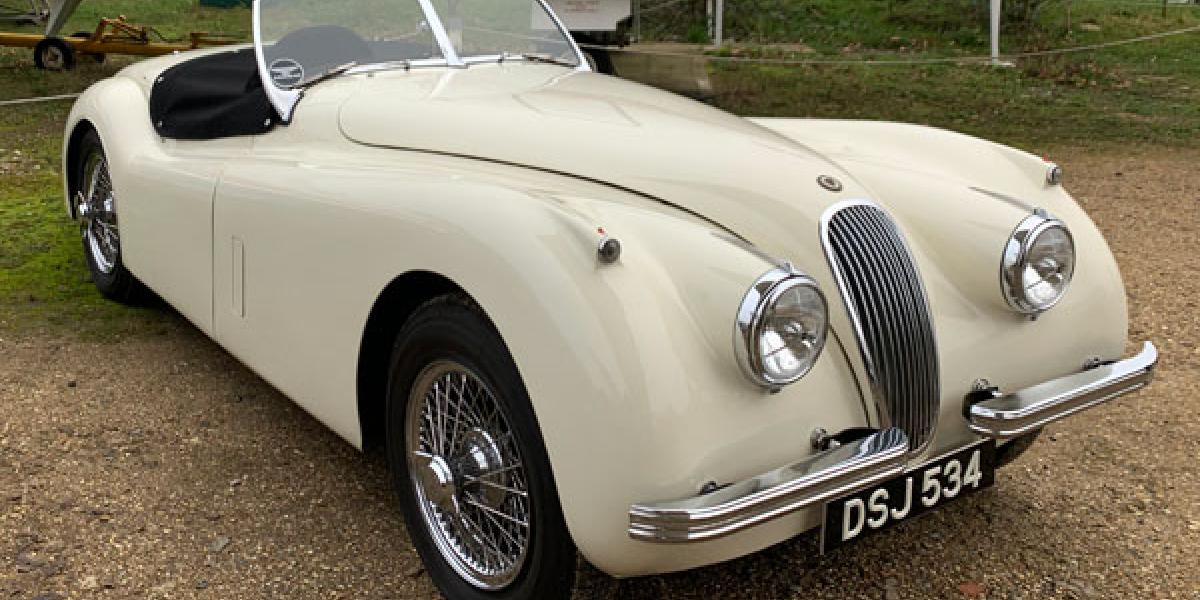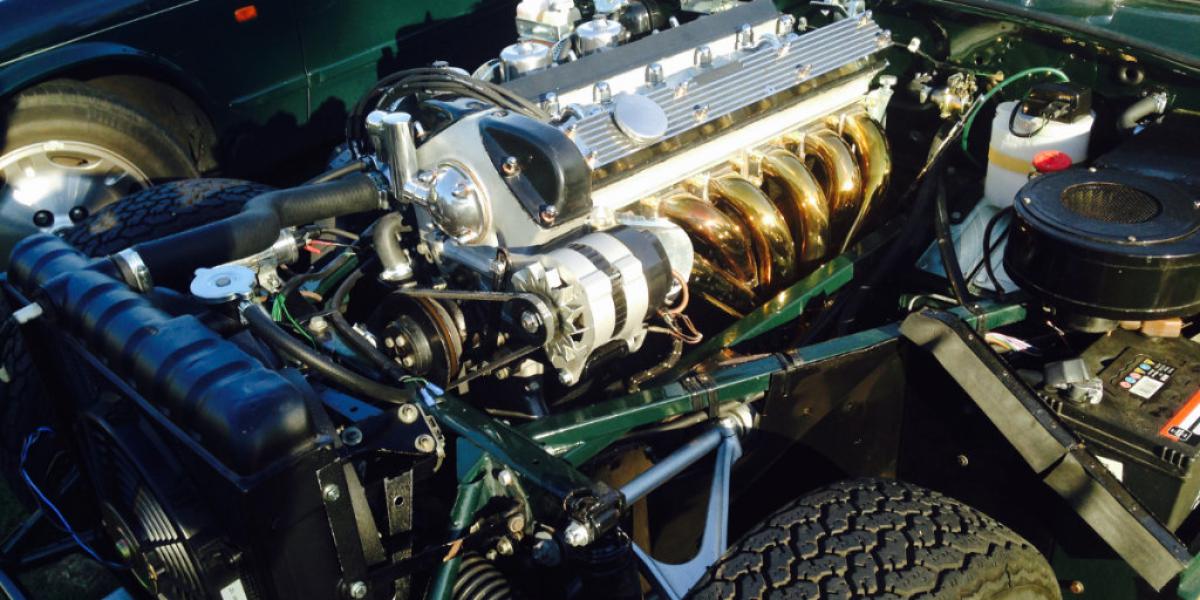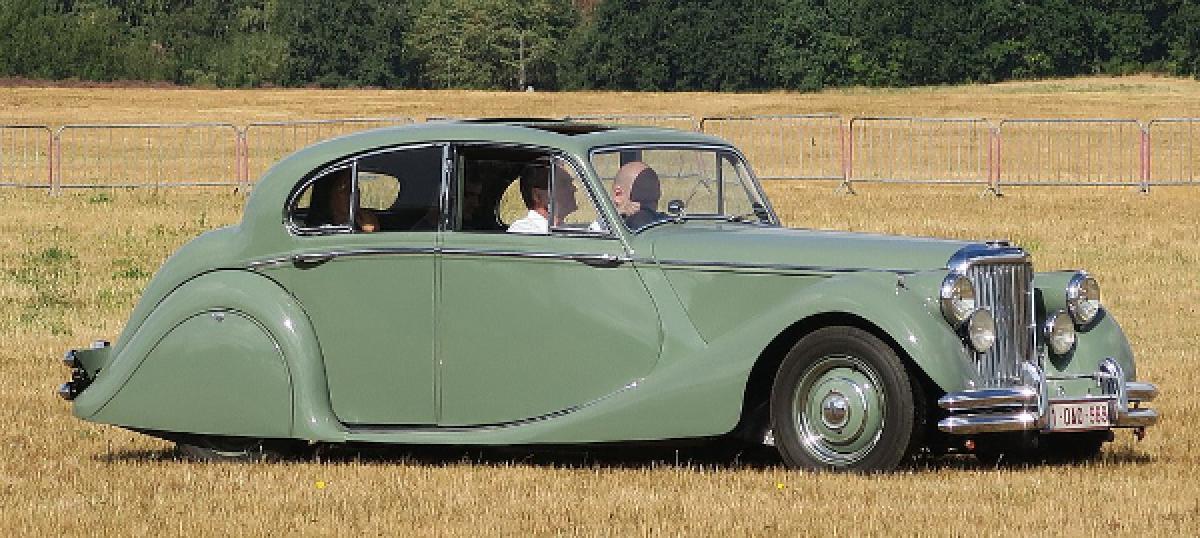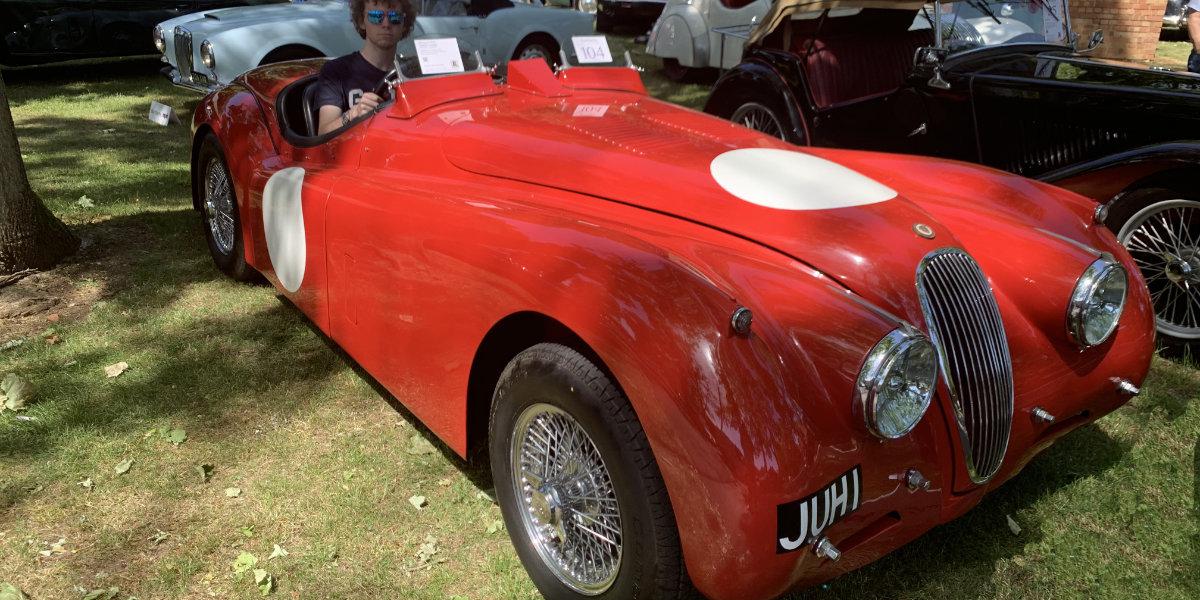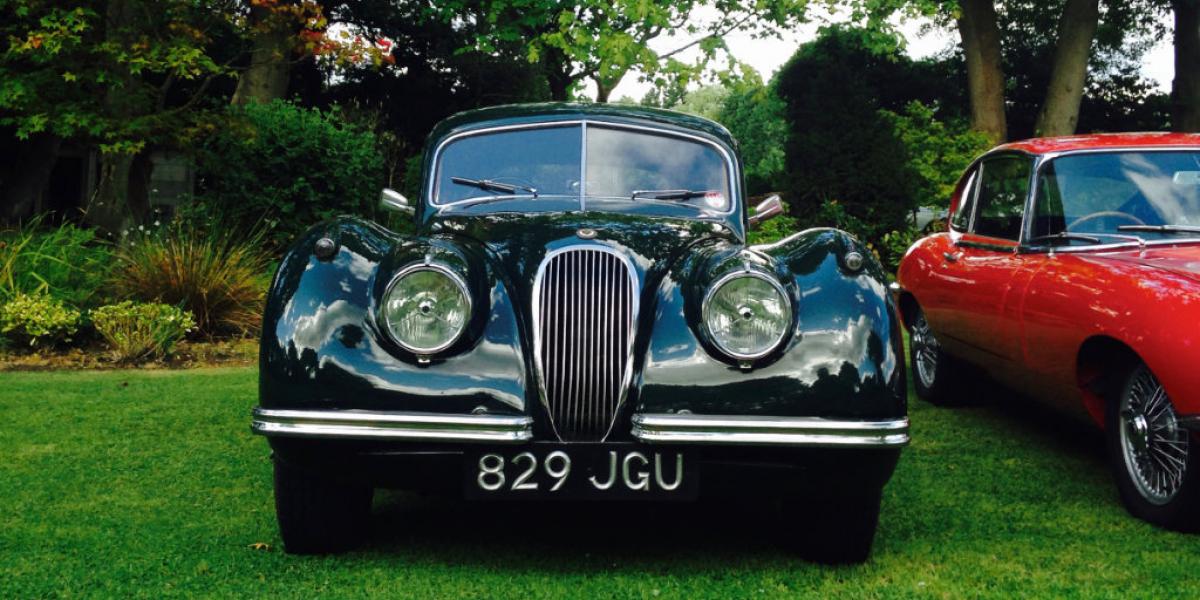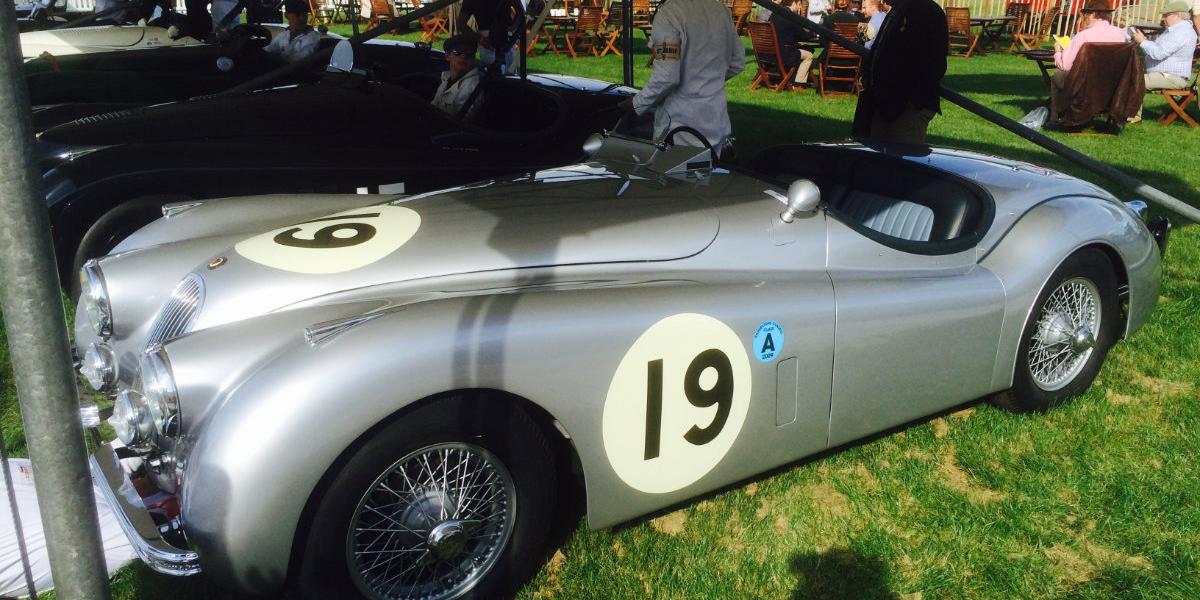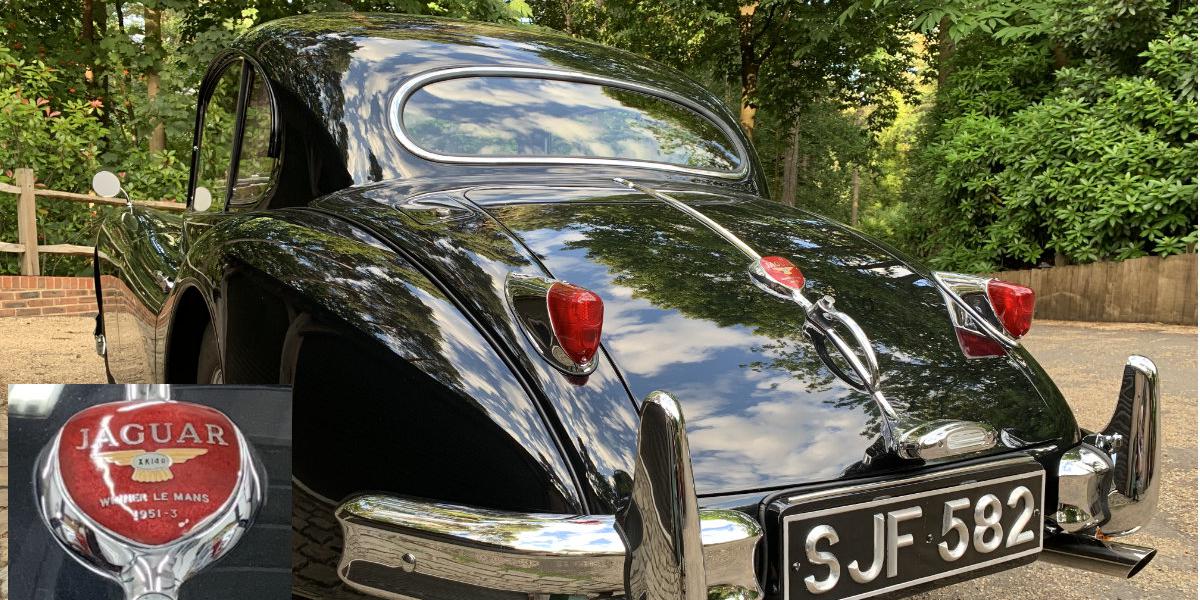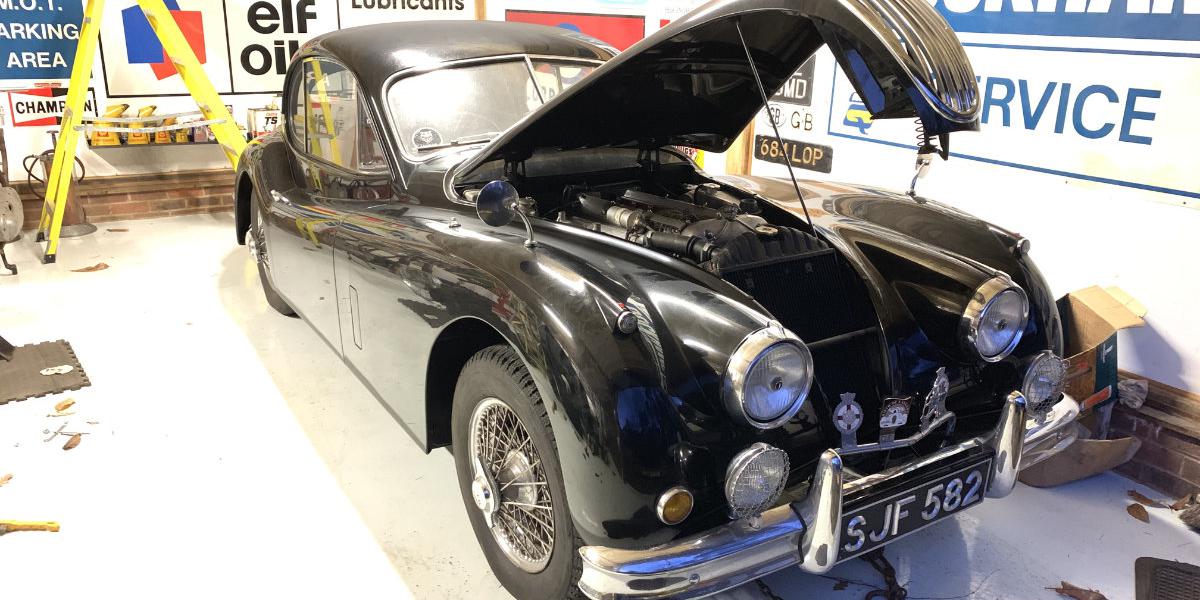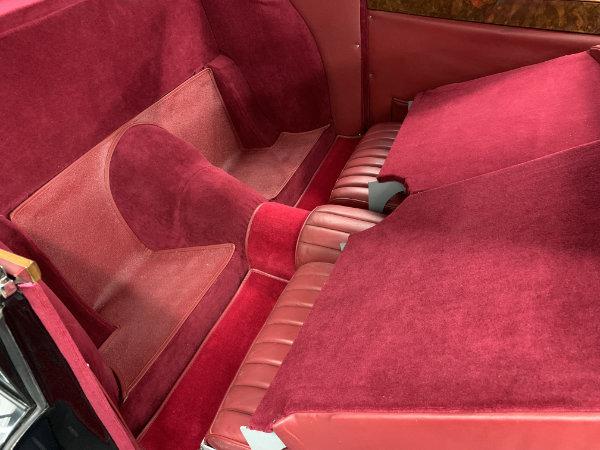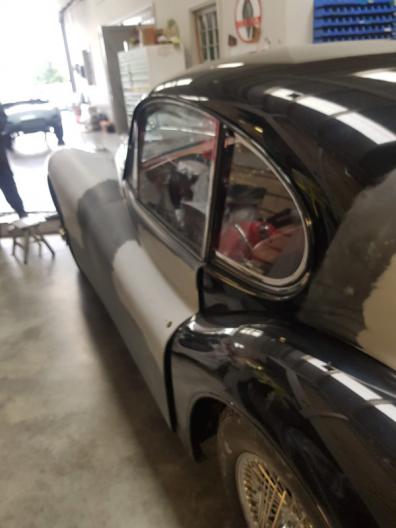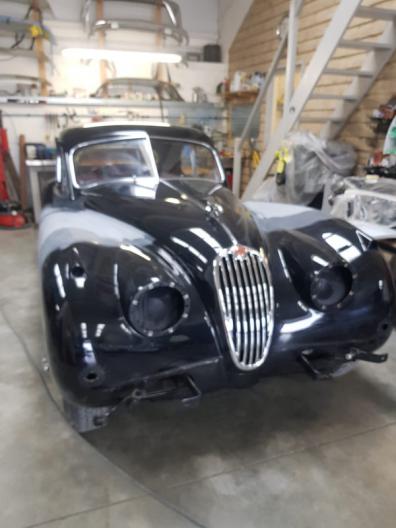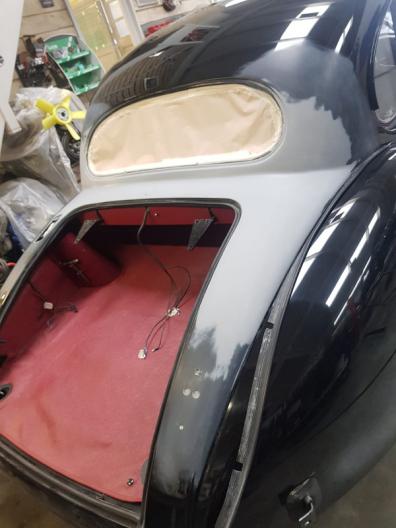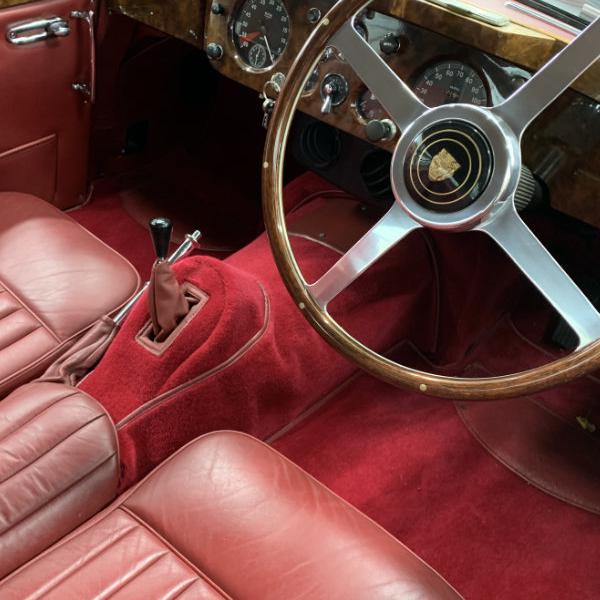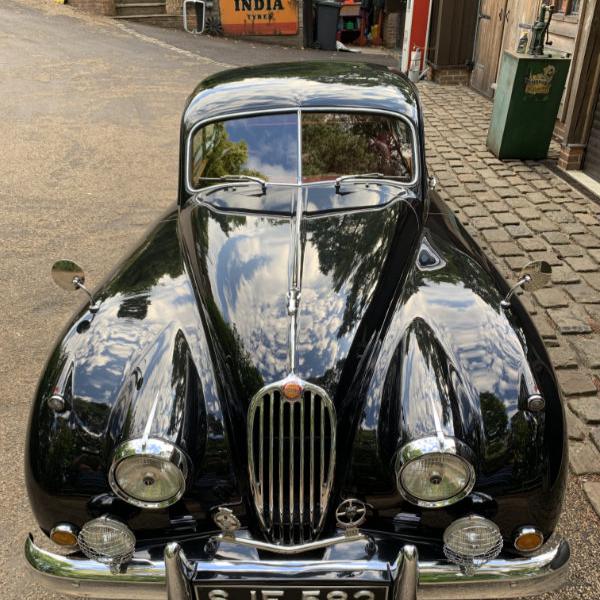This is a 66-year-old 3.4 Jaguar XK140 Fixed Head Coupe (FHC) powered by the XK double-overhead-camshaft six-cylinder petrol engine fed by a twin SU carburettor with a four-speed manual transmission.
It was produced at the Jaguar Browns Lane Plant in Coventry and first registered on 13th October 1955.
The Browns Lane plant was built by Daimler as one of the many British government shadow factories.
The shadow factories were built alongside existing motor industry factories in the build-up to WW2.
The idea was to accelerate the transfer of technology from high production motor industries to the new factories that would be building military vehicles and aircraft should war break out.
The factories were actually shown as an example of Britain's wartime readiness and capability. In the event, both the shadow factories and car production plants were all devoted to wartime production.
However, it was the XK140’s predecessor, the XK120, so-called for its top speed, an open two-seater concept car unveiled alongside the new luxury 4 door saloon Jaguar MK V at the 1948 International London Motor Show that caused a sensation that reverberated worldwide.
